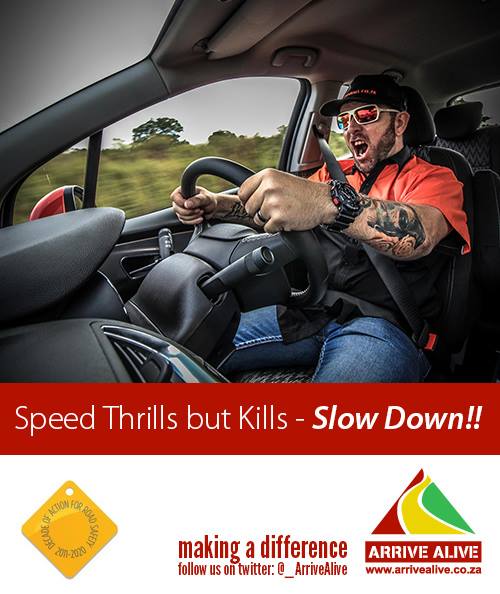 The faster you go, the more likely you are to crash. The faster you crash, the more likely you are to die.
The faster you go, the more likely you are to crash. The faster you crash, the more likely you are to die.
Where we don't link speed to a crash - for example, we may blame alcohol or the weather - the outcome depends on the speed the driver is traveling at.
If you're driving at 120 km/h, you are twice as likely to die in a crash than if you are driving at 100 km/h. If you're driving at 130 km/h, you're three times as likely to die.
Slower driving saves lives! International experience shows that as speeds reduce, the road toll goes down.
- Research in the United Kingdom found that a 1 km/h reduction in the average speed can produce up to a 3 percent reduction in injury crashes.
- Rural roads: Research in Sweden demonstrated that there will be twice as many fatal crashes when the average speed on rural roads is 120 km/h, than when it is 100 km/h. There are three times as many fatal crashes when the average speed is 130 km/h.
- Urban roads: Research into urban roads in Australia demonstrated that the risk of involvement in a casualty crash increases exponentially. With each 5 km/h increase in traveling speed above a 60 km/h speed limit, the risk of involvement in a casualty crash approximately doubles.
Evidence of the speed/crash relationship: Evidence of the speed/crash relationship has been demonstrated in studies of the following situations:
- Between 1987 and 1988, 40 states in the United States of America raised the speed limit on interstate highways from 55 m.p.h. (88 km/h) to 65 m.p.h. (104 km/h). This resulted in an increase in average car speeds of about 3 m.p.h. (5 km/h). Over the same period, there was an increase in fatalities on these roads of between 20 and 25 percent.
- During the 1973 fuel crisis, the New Zealand government reduced rural speed limits from 55 m.p.h. (88 km/h) to 50 m.p.h. (80 km/h). Because of concern about fuel shortages, many people complied with the new speed limit: there was an 8-10 km/h reduction in average rural speeds. This led to a significant drop in the number of injuries on these roads.
- In Australia, the speed limit on Melbourne's rural and outer freeway network was increased from 100 km/h to 110 km/h in 1987, and then changed back to 100 km/h in 1989. The injury crash rate was compared with a ‘control group' (an area where the speed limit remained the same). It was found that the injury crash rate per kilometer traveled increased by 24.6 percent following the change from 100 to 110 km/h, and decreased by 19.3 percent following the change back to 100 km/h.
Risks to pedestrians

The severity of injuries sustained by a pedestrian hit by a vehicle is clearly related to the impact speed. The risk of death increases dramatically at speeds from 40 to 60 km/h. For example, the likelihood of death for a pedestrian hit at 40 km/h is approximately 30 percent, while the likelihood of death for a pedestrian hit at 60 km/h is around 90 percent. The risks for vulnerable pedestrians, such as the elderly and young children, are even higher.
Some facts about speed cameras
A study of crash data in the 20 months following the introduction of speed cameras in New Zealand in 1993 found
- a 23% reduction in fatal and serious crashes at urban speed camera sites
- an 11% reduction in fatal and serious crashes at rural speed camera sites.
International experience shows that speed cameras are a highly cost-effective speed management tool. This means that they save a lot of lives for the cost of putting them in place and operating them.
[Information from the Land Transport Safety Authority in New Zealand]